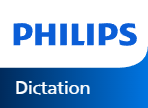From robotics to augmented reality and beyond, the growing prominence of technology’s role in business has been fascinating. But there is also concern that some types of technology, such as AI, may threaten people’s jobs by performing functions or even “thinking” as humans do. However, the reality is that the development of AI-related technologies, especially speech-to-text, is designed to complement human work – not replace it.
From robotics to augmented reality and beyond, the growing prominence of technology’s role in business has been fascinating. But there is also concern that some types of technology, such as AI, may threaten people’s jobs by performing functions or even “thinking” as humans do. However, the reality is that the development of AI-related technologies, especially speech-to-text, is designed to complement human work – not replace it.
There are many ways the rising popularity and adoption of speech-to-text help enhance workflows and make the day easier and more enjoyable for employees in all kinds of roles. Utilizing voice solutions also helps prepare employees for future technological evolution in the workplace, keeping them on the leading edge with desirable, transferrable skills. For support staff, this is a win-win, as evidenced by these key benefits (among others):
Efficient tools that make you whistle while you work
While those recording (authors) typically use speech-to-text tools for capturing raw content (that is usually processed for document generation by someone else), what assistants and other support team members find especially helpful is the ability to receive text drafts and voice recordings to easily listen to the audio file while performing any necessary corrections.
Solutions such as Philips SpeechLive offer both front-end speech recognition – text on screen in real time – and back-end speech recognition -speech-to-text from an existing recording. This enables assistants to use speech-to-text to suit specific situations. Clearly enunciated recordings, for example, might only need minor corrections from a transcribed speech-to-text file. Other recordings that might not be as clear, on the other hand, might not produce as good a first draft, so typing while listening to the audio is faster.
The result is document generation with less time and effort, from initial drafting, to review and socializing among peers and supervisors, to approval. Advanced speech-to-text solutions such as SpeechLive are also extremely user-friendly, so there is very little ramp-up time needed to incorporate them into daily routines so they can immediately add value and realize time savings.
Stay fluid, stay flexible
Backlog can be one of the biggest frustrations for transcriptionists, administrators, and other support team members when trying to stay on top of their workdays. But with cloud-enabled speech-to-text solutions, one person isn’t held accountable for a single project such as transcribing a voice recording (which often leads to unnecessary delays and bottlenecks).
Having a centralized system for capturing and managing voice files allows team members to collaborate easily, and share and assign workloads no matter when, where, or how they work. This business agility lends itself to increasingly popular hybrid work models, so team members can tackle workloads and keep workstreams flowing seamlessly and more predictably. Ultimately, this provides better work-life balance for employees and contributes to their overall mental and physical well-being.
Who wouldn’t like more time in the day?
Relieving workloads – not replacing workers – is the driving force behind speech-to-text and other AI-adjacent technologies. As Jonny Gifford, Senior Advisor for Organisational Behaviour at the UK’s Chartered Institute of Personnel and Development, says: “AI replaces tasks, not jobs” [emphasis added].
That being the case, these solutions can be leveraged to bring more automation to “transactional” tasks, and employees can up-level their skills by giving more time to interpersonal or strategic tasks and projects. Freeing up employee’s time from doing time- or labor-intensive tasks that could be supported by speech-to-text solutions means they are spending their time and effort in a higher-value and higher-impact way.
The growth in adoption of the voice technology sector has illustrated how valuable it is to businesses of all types – large and small, public and private, and across a wide spectrum of industries. Rather than fearing or resisting speech-to-text and related tools, embracing them opens up a world of opportunities for putting more time, convenience, and ease into the workday.
For more information on our solutions, please visit the Philips Dictation Website.
We're evolving — and so should your insights. Heads up — Lawyers Weekly is going premium from 1 May for just $5 a month. Stay informed without missing a beat. More information coming soon.





